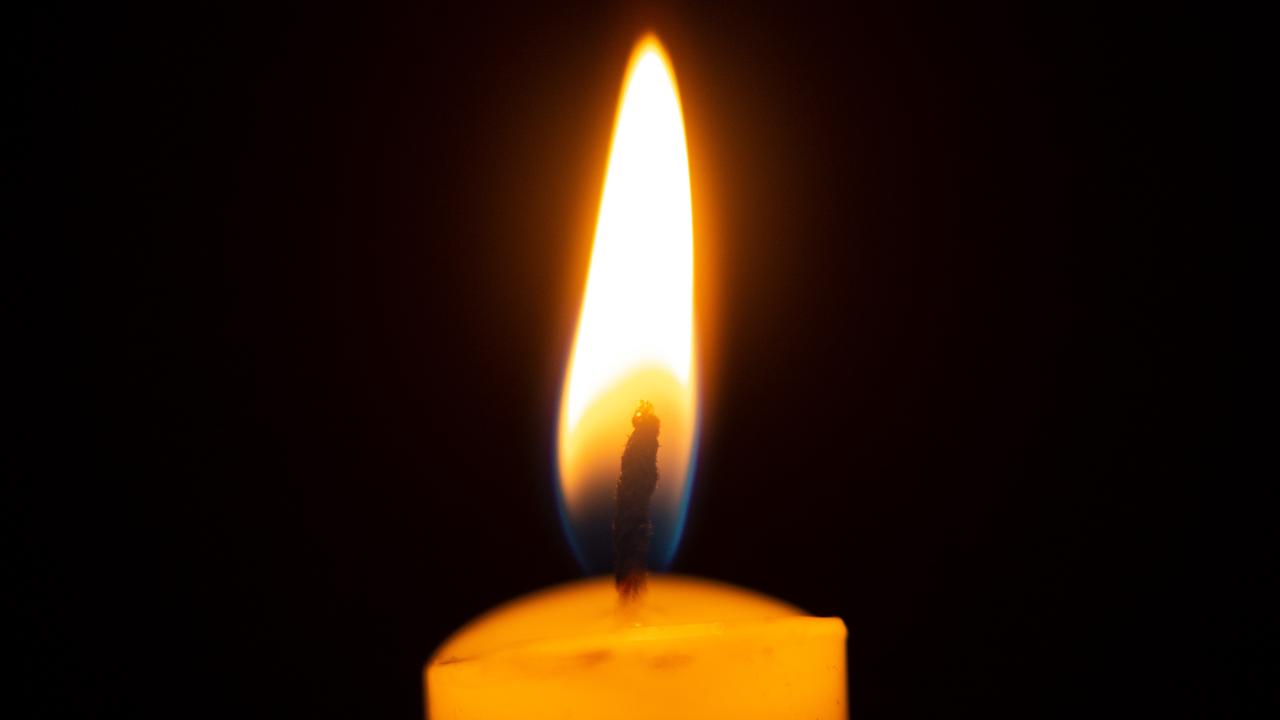Angel of Mons, a crucified Canadian and the Kadaver factory: Mysteries and spin of World War One
A KEY battle turned around by phantom soldiers; the crucifixion of allied soldiers; and Germany’s corpse factory. These are the X-Files of the war.

ANZAC Centenary
Don't miss out on the headlines from ANZAC Centenary. Followed categories will be added to My News.
THE battle won by ghostly angels; the crucifixion of allied soldiers by jeering Germans; and the Kaiser’s corpse-boiling factory.
In the chaos of conflict there is much that cannot be fully explained — and the three examples above are some of the most extraordinary and lasting mysteries of World War One. They also lay bare the power of propaganda.
A century — almost to the day — after spectral bowmen and women in white apparently shielded British troops from the steam-rolling German army, in the desperate first full-scale clash between the enemies, we examine these bizarre and grotesque claims.
THE CRUCIFIED SOLDIER: GHASTLY ATROCITY

THE image was sickening: an Allied soldier pinned, crucifixion-style, to a barn door with bayonets and left to hang.
The grotesque deed allegedly happened near the battlefield of Ypres, Belgium around 24 April 1915. The victim, apparently a Canadian sergeant.
Reports were deemed credible enough to appear in British newspapers and gave rise to outraged questions in Parliament about troops — in the plural — being horrendously murdered, before finding its way into anti-German propaganda.
There was even a widely-cited eyewitness account. Canadian Private George Barrie told how he had taken shelter in a ditch at St. Julien and seen a “small party of Germans about 50 yards away” near a shed or barn.

After they had gone, he added: “I was horrified to see that a man in a British uniform was literally crucified, being fastened to the post by eight bayonets. He was suspended about 18 inches from the ground, the bayonets being driven through his legs, shoulders, throat and testicles. At his feet lay an English rifle, broken and covered in blood.”
SHOULD THE WORST HAPPEN ... IT DID: How we were dragged into war
On the flip side, two other “eyewitness” accounts from soldiers were later discounted as false; the incident was denied by Germany, was not vindicated by official Allied inquiries and, in the eyes of many after the war, largely believed to be spin.
However a recent investigation by a British historian not only strongly indicated the story may be true but identified the victim as a Sgt. Harry Band of the Canadian First Division — a soldier who had gone missing on April 24 and whose name was associated with the tale from the first.
It is believed the atrocity happened as bloodlust ran high on the Western Front, with reports of prisoner abuse on both sides in the aftermath of Germany’s then-shocking first use of chlorine gas against the Allies.
What really happened; the identity of victim and perpetrators; and whether the soldier was alive or dead when hung up will probably never be known for sure. But nor can the incident be written off as a myth.
THE ANGEL OF MONS: WHO YA GONNA CALL?

LESS than three weeks after Britain entered the war, taking Australia and its other dominions into the conflict, its troops were facing the invading German army as it smashed through neutral Belgium towards France.
With the French already being driven back, the small British Expeditionary Force dug in around the coal mines, slag heaps and canals of Mons.
Barrelling towards them were more three times their number of Germans. Neither side were aware of the massive size difference — nor were the Brits yet fully aware of the atrocities Germans had been meting out to Belgian civilians on their advance.
And nobody expected divine intervention.
At first the Germans got a rude and lethal shock — the 70,000 BEF volunteers had been endlessly drilled to be the world’s fastest and most accurate riflemen, firing 15 rounds a minute from their bolt-action weapons. As fighting began in earnest on the morning of August 23, they slaughtered the grey-green hordes, advancing medieval-style towards the shallow British rifle pits.

But numbers began to tell and with casualties mounting, the British fell back — a successful operation that enabled the Allies to snatch a crucial victory just weeks later.
Among the Brits were a few Australians; among them Corporal Edward Dawson Watson, who carried with him an Aussie red ensign.
It was during this fighting retreat that the “angels” first appeared.
Fast-forward six months and all over Britain the story was being told of how supernatural figures had saved the day. In one account they were archers led by a knight said to be England’s St George; in another they were angels; and a third told how a group of infantry, cut off and preparing for a last stand in woodland, were guided to safety by a woman in white.
So ... what happened? Real aid from above or a “heaven-sent” opportunity for propaganda?

Unfortunately there are no documented first-hand accounts of angels, bowmen or heavenly maidens appearing in the combat. And most second-hand tellings from Britons and Germans alike have been discounted as not credible.
Senior officer Brigadier-General John Charteris — who was deeply involved in the propaganda war against Germany — noted the angelic intervention was a popular rumour among the troops by September 1914. But his claims were not published until 1931.
Were the ghosts the hallucinations of exhausted, highly stressed men? Battlefield hallucinations are far from improbable — but even if these were the imaginings of traumatised minds, why are there no first-hand accounts?
The most likely explanation may not be spooky, but it is bizarre — and it boils it down to an extraordinary coincidence of timing.
In late September 1914, a short fictional story was published in London’s The Evening News, telling of phantom archers from the famous English victory at Agincourt in 1415, coming to the aid of modern British soldiers.
The tale, called The Bowmen, was written in the first-person style by author Arthur Machen. It was recirculated over the next few months in other publications — and in the telling, variations crept in, with some accounts turning it from fiction to fact.
Historians have suggested that misinterpretation was encouraged by official sources, keen to seize on a story suggesting the nation was supported by divine power.
HUMAN ANGELS? The women who lived and loved at the front


With the nation by early 1915 realising the war was going to be brutal and likely lengthy, the morale boost was seized upon by the public — then fed back into the military as members of that public became new recruits.
Machen’s protestations that he had only written fiction had no impact on a population seeking good news. He later wrote: “It began to dawn on me that ... I had succeeded, unwittingly, in the art of deceit ... The snowball of rumour that was then set rolling has been rolling ever since, growing bigger and bigger, till it is now swollen to a monstrous size.”
Misunderstanding? Falsehood? Maybe. Yet even if the bowmen of Mons did not fight — their story struck a valuable psychological blow.
THE KAISER’S KADAVERS: USING DEAD SOLDIERS

IT’S been called both the most popular atrocity story of World War One: a factory behind the front lines where Germany rendered corpses for much-needed fat to make nitroglycerine, candles and more.
With the Kaiser’s armies fighting on two major fronts and his navies beset at sea, there was certainly a serious shortage in Germany of tallow. The substance was also used for soap, lubricants and even boot polish.
Animal corpses were used in the process, without controversy, across the world.
SIMPSON AND HIS DONKEY? There’s more to the famous story
Yet from April 1917 a more sinister claim — that Germans were using human bodies — began to appear in Belgian and British newspapers. Their original source was a story in a German paper — but that paper did not specifically refer to human bodies, whereas the Allied ones did.
While the story, not surprisingly, gained much traction on the Allied side, even the British government did not accept it as true, and Germany has always officially denied it.
Arguments against the claim pointed to mistranslation of a key word: “kadaver”.

Although similar to our “cadaver”, “kadaver” actually referred to animal remains — while the German word for a human corpse was actually “leichnam”.
That explanation was given an enormous boost after the war, when Brigadier General John Charteris (remember him from the Angel of Mons account?) reportedly told an audience in New York that he had invented the story, switching the captions of two photographs — one showing dead soldiers being taken for burial, the other animal “kadavers” being taken for processing.
He denied his account after it was reported in the New York Times, with one theory being he had not realised a journalist was present at his speech — nevertheless it did nothing to lend credibility to a grotesque, but very probably untrue, “legend” of the war.
Originally published as Angel of Mons, a crucified Canadian and the Kadaver factory: Mysteries and spin of World War One


